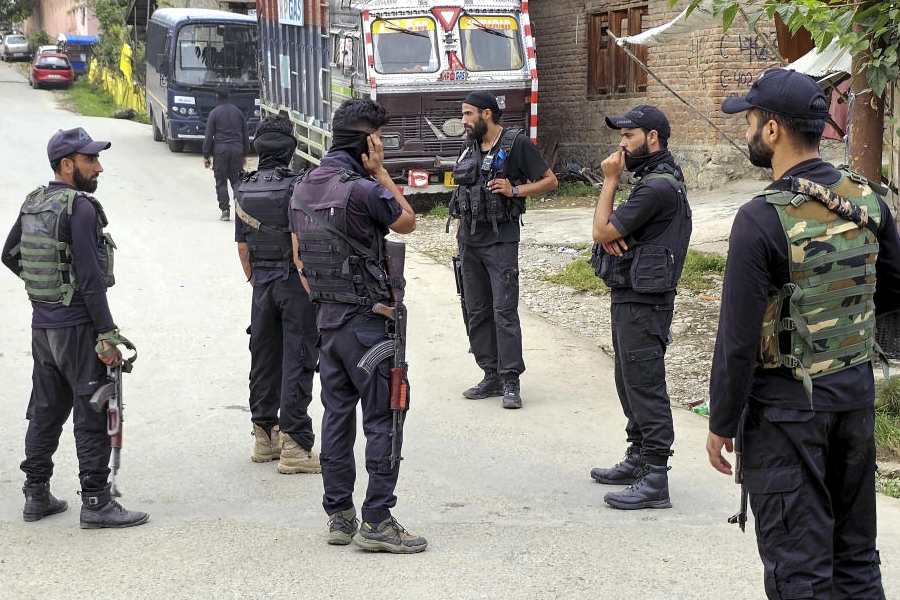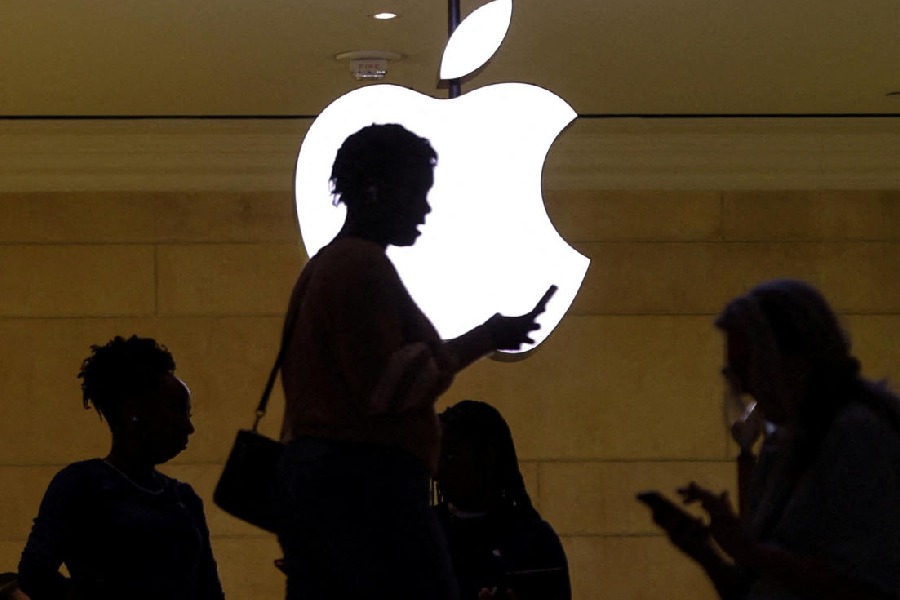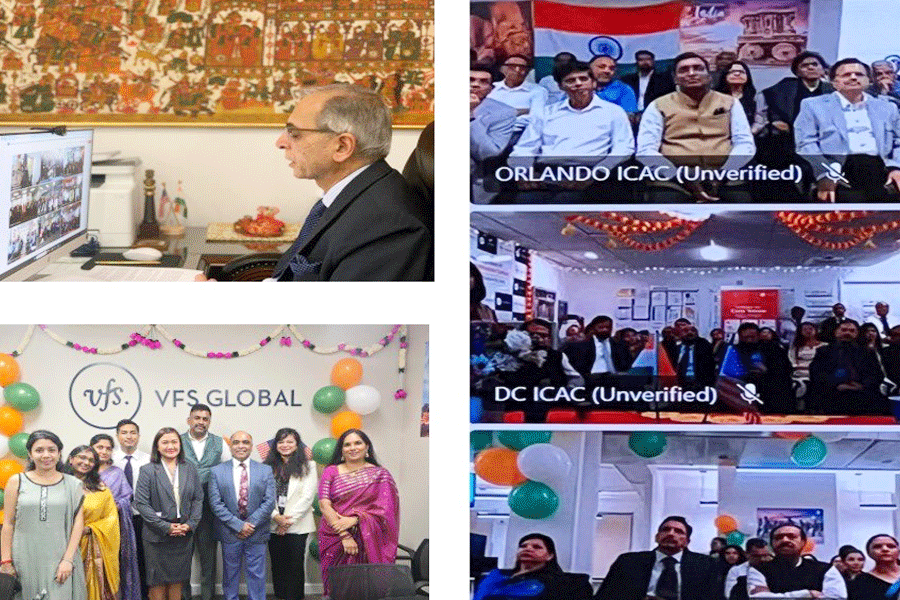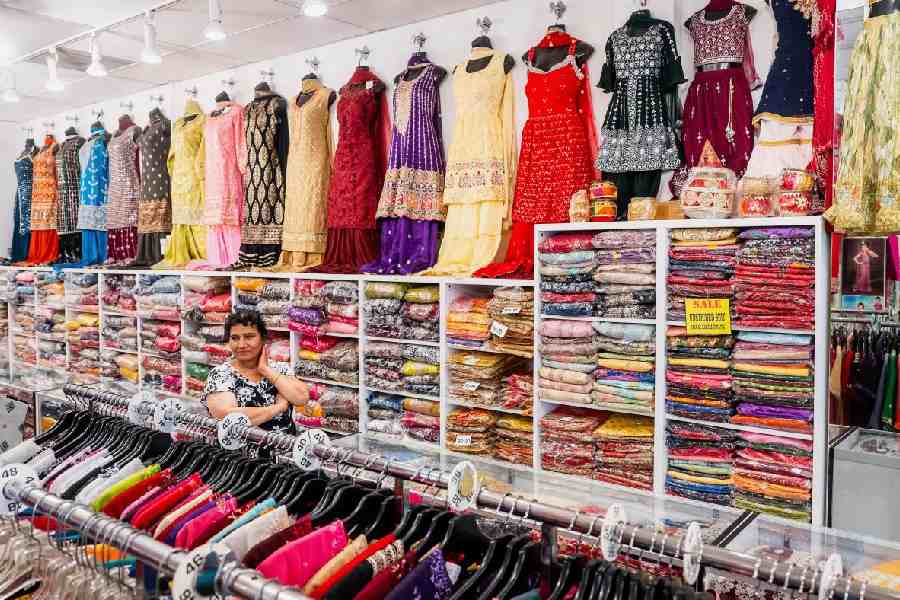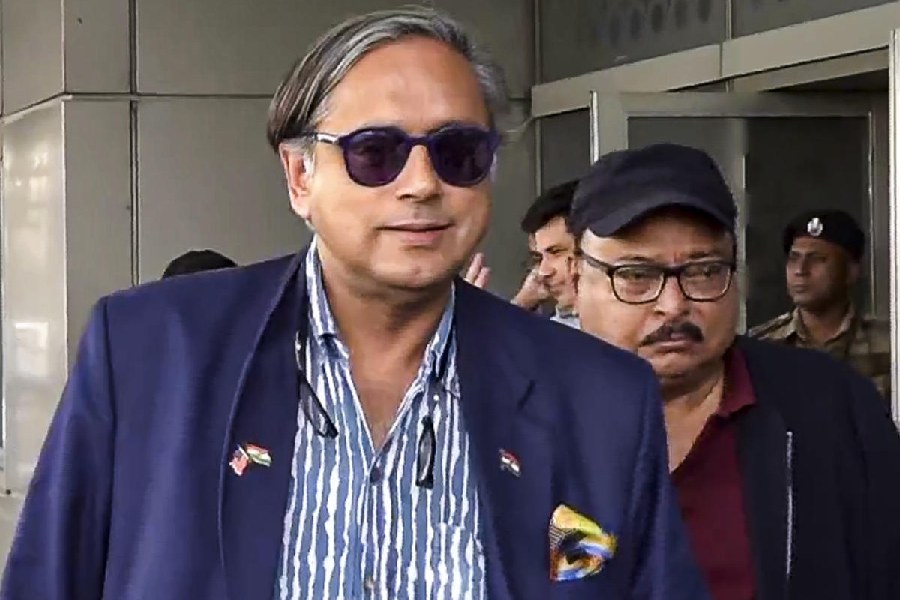
Pictures: Pabitra Das
Some time in the first half of the 19th century, a schooner set sail from Calcutta to Mauritius, taking with it a cache of indentured labourers and a curious mix of characters whose fates became forever intertwined as the jahajbhais and jahajbehens of the Ibis.

The same can be said about the 180 onboard the Riviera on Friday evening. For, now there’s something that will separate us from the legions of Amitav Ghosh readers around the world — a journey down the Hooghly with the writer himself.
The occasion was ‘Sea, River, Flood’ — an Afterwords session on Day 2 of Tata Steel Kolkata Literary Meet, held in association with Victoria Memorial Hall and The Telegraph. We set off around 8pm from the Kolkata River Traffic Police Jetty and sat mesmerised as much by the conversation between Amitav Ghosh and his long-time friend Pradeep Kakkar as by the surreal setting and a grandly lit-up Howrah Bridge. And when Ghosh’s voice boomed as we passed under the bridge, the goosebumps we felt didn’t have much to do with the sudden Calcutta chill. Ghosh touched upon many topics in the nearly 80-minute chat. Here are some edited excerpts....
THE RIVER ROUTE: “The river route of the Ganga is one of the most important in history. Every major Indian civilisation, many of the most important cities in our history are along the Ganga. We speak so much about the Grand Trunk Road but we’ve completely forgotten that the Ganga was a navigable channel which it no longer is and this is one of the tragedies of our history.... This was the great thoroughfare for the people who populate my trilogy… indentured workers and most of all… soldiers. One aspect of Calcutta that we tend to forget is that this was the city from which the British launched most of their colonial wars in Asia — the opium wars, the war in Java, Malaya, even the Mesopotamian campaign,” Ghosh said.
DEETI AND KESRI: “In this trilogy, the central characters — Deeti and her brother Kesri Singh, a sepoy — are from the Bhojpur region, between Benaras and Patna. Their journey down the river begins in the Ghazipur district, 40 miles from Varanasi.” (He went on to show some images that had helped him imagine the setting of the Ibis books — aspects of the city of Benaras by William Hodges, Thomas and William Daniell and even one of the Benaras ghats by James Prinsep.)

WHAT THE IBIS LOOKED LIKE: “Ibis was an ocean-going Baltimore schooner. It was a top-sail schooner with sails on its foremast. I was on a schooner in Burma in the Mergui Archipelago. There were maybe 10 of us in the schooner and we felt packed like sardines! In the 19th century, however, on a ship like the Ibis, there would have been almost 200 people.”

CALCUTTA 2035: Pradeep Kakkar: Twenty-five years from now, can you guess what this coastline might look like?
Amitav Ghosh: It’s going to be completely different; unrecognisable. Sea-level rise is going to catastrophically change everything. We already see how much saltwater intrusion there is. After Cyclone Aila, so many people were thrown out of the Sunderbans. I think it’s very likely that if you were back here in 2035, the city of Calcutta would probably not exist. Calcutta is already below sea level in a cyclone-prone area and if it were to face the kind of inundation Chennai faced last year, it’s hard to see how it would recover. It’s hard to see how Chennai will recover, actually.... In fact, Bombay is so exposed, if a cyclone were to come in to Bombay, all the major financial institutions would be out of commission for at least two or three months. India’s financial infrastructure will collapse.
CALCUTTA THE WATER CAPITAL: “Generation after generation, politicians come and have this idiotic dream of recreating polluting factories, whereas you could turn Calcutta into a financial hub for the entire north-east region. All these old warehouses along this embankment are such wonderful gallery spaces. So much could be done with them. Calcutta could become a design hub or a retail hub. In terms of looking at what the assets of Bengal are, assets that the rest of India has eyes on, it’s fresh water. India is rapidly turning into a water-stressed subcontinent. Within 10 to 15 years, 400 million people in Punjab and northern UP are going to be out of water. They’re already talking about pumping out water from our region to every other part.”
PRALAY AND WE: The conversation ended almost where the Ibis trilogy did, with Amish asking Ghosh about one of his characters, Baboo Nob Kissin, and his belief that the British were harbingers of ‘pralay’. “There is a perspective in Indian philosophy that pralay is Mother Nature’s way of cleaning up the junk and starting once again. Was that just Baboo’s view or is that your personal view too?” Amish asked.
“Well, what can you say! The system that they put in place in India and in China is what is going to bring pralay upon us. We are really facing the beginning of pralay. It’s also interesting how pralay as it figured in the Indian tradition is really let loose by the demon of greed. And in the Mahabharata certainly, there are constant references to this. So yes, I think we have become the rakshasas who are bringing pralay upon us.”
Text: Samhita Chakraborty and Ramona Sen
Were you on the Riviera with Amitav Ghosh? Share your experience with us at t2@abp.in





